
To improve merchant satisfaction, I worked with the team to introduce a policy change that removes fines and holds sellers accountable to their infractions.

Wish had two policy enforcement methods: penalties (which includes fines and payment withholdings) and infractions. With the launch of the new seller standards program, Wish wanted to remove the concept of fines. This new direction stemmed from:
Strategy change: Instead of using fines to prevent bad behavior, we wanted to hold merchants accountable to each of their infractions. Each infraction would affect their seller standards score and impact their impressions and commission rates.
Operational risk: There was the risk of issuing fines but not being able to collect them.
PR issues: Monetary penalties are uncommon in other marketplaces and merchants saw fines as a way for Wish to exploit sellers and take their money when they did something wrong.
We wanted to move away from fines and and this meant moving existing policy violations from penalties to infractions, while still enabling merchants to dispute the infractions and fix their seller standards score if they were wrongfully issued.
As part of issuing infractions, Wish needs to allow merchants to dispute it in case it was wrongfully issued or if the situation was out of the merchants’ control. We planned to use the existing infraction dispute flow for the soon-to-be migrated penalties.
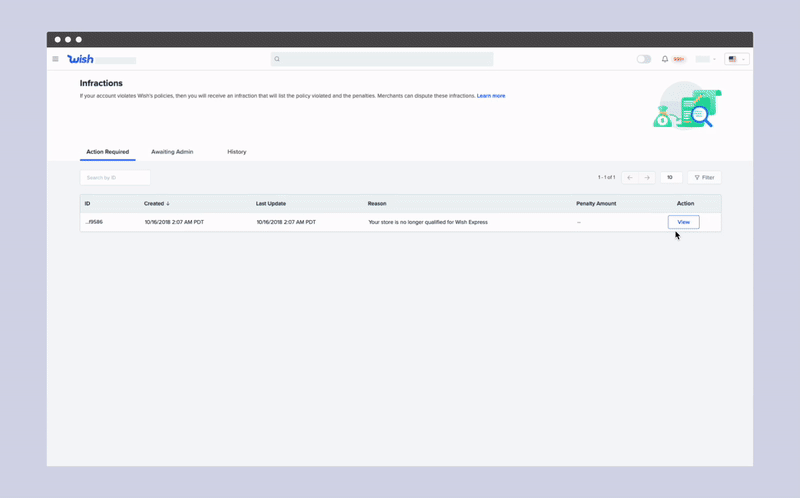
However, as we were auditing the existing infraction page, we realized that this isn’t something we could reuse easily:
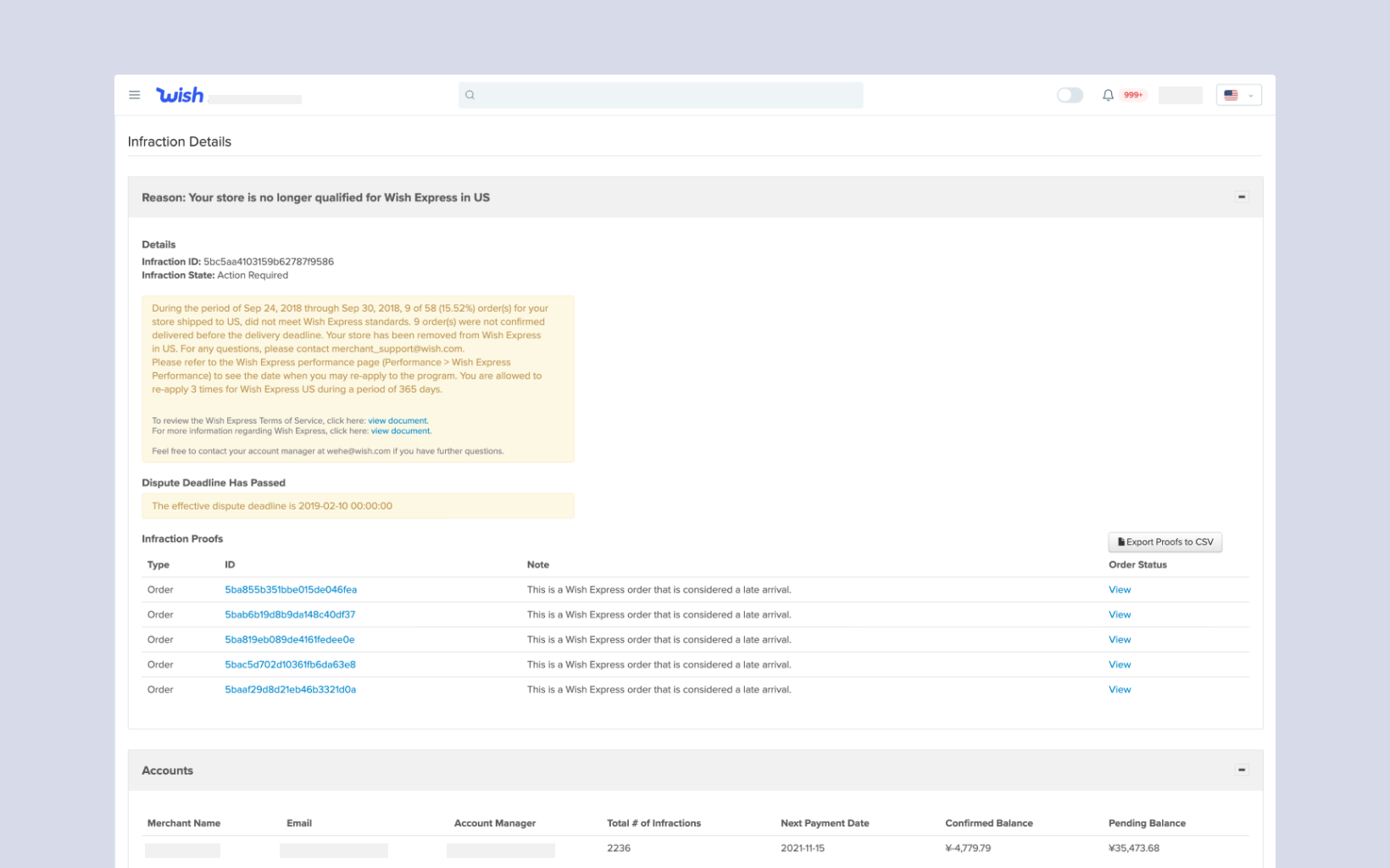
This page was never optimized for merchants. It uses the same UI the internal Wish team uses to review dispute requests and shows irrelevant information to merchants.
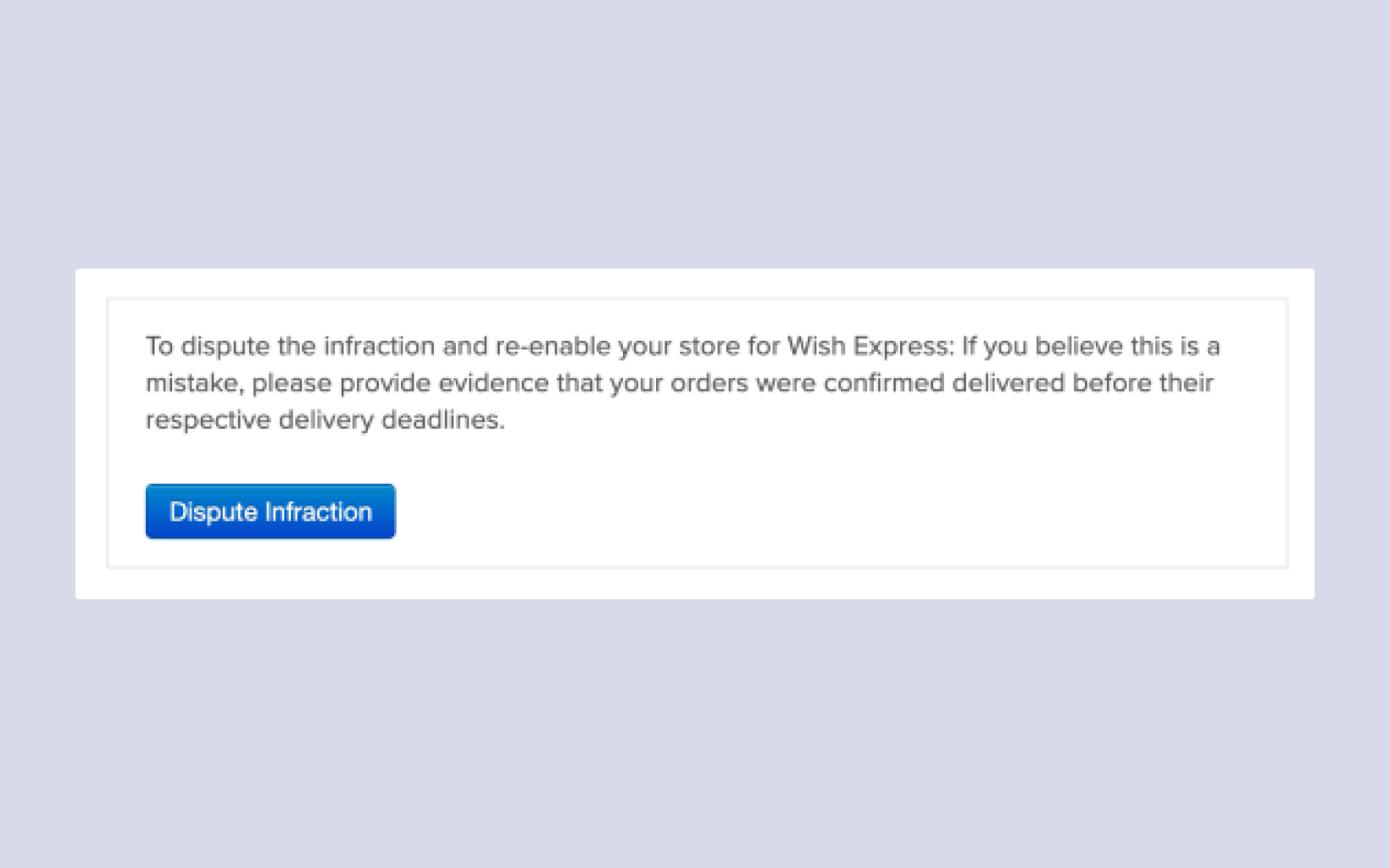
Wish doesn't ask the merchant to select their dispute reason or specify which documents they should upload. This makes it harder for both our merchants and internal team to resolve the dispute.
Migrate existing order fulfillment related policy violations from penalties to infractions
Guide merchants through the dispute process and help our internal team quickly resolve requests
To tackle this project, I partnered with the team’s product manager, content strategist and compliance team members to understand what we could do to make it easier for our merchants and internal team members to resolve disputes.
Solidify dispute reasons and requested documents
Audit existing penalty and infraction pages
Brainstorm ideas with given context
Review with relevant teams for feedback and reiterate

How might we improve the infraction page and guide merchants through the dispute process?
One of the biggest things that would help our internal team is if we specified to merchants what type of information we want them to upload to prove their case. For us to be able to do that, I explored options we could take to get input from the merchant to understand why they are submitting a dispute request.

Ask merchants to explain their situation and have the internal team follow up with additional questions

Use a questionnaire and ask questions to narrow down their situation

Have a dropdown to let merchants self select their dispute reason
Going hand in hand with capturing dispute reasons, I explored ways to offer merchants more guidance during the overall dispute process.

Break down the pages and separate the infraction details from the dispute area so that we’re not showing the information all at once

Remove distractions or any unnecessary information on the page

Use a form to communicate instructions instead of the messaging section
With all these ideas, I focused on solutions that would make it clear for merchants to resolve a dispute and easy for the internal team to get all the necessary information they need to review the dispute.
Along with these changes, I also updated the UI to match the overall look and feel of the rest of the platform.
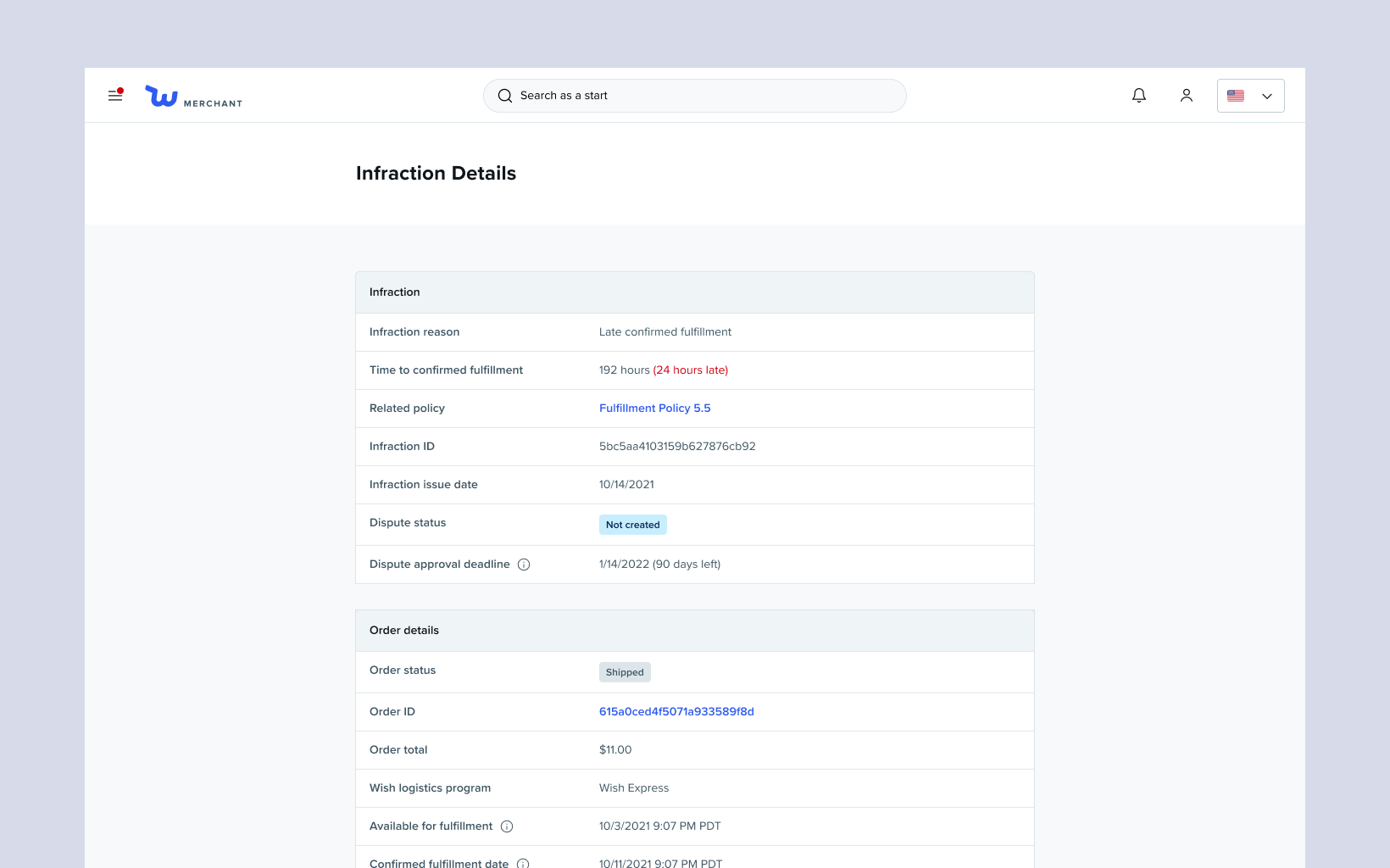
Separating the infraction details from the dispute process
Talking with an account manager, I learned that what merchants care the most about when they receive an infraction is why they received it and what can they do to resolve it. Unlike before, where the infraction details and dispute form lived on the same page, merchants will now see a page dedicated to why they received an infraction. This page keeps the same level of transparency as previously, but the information is a bit easier to scan and digest.
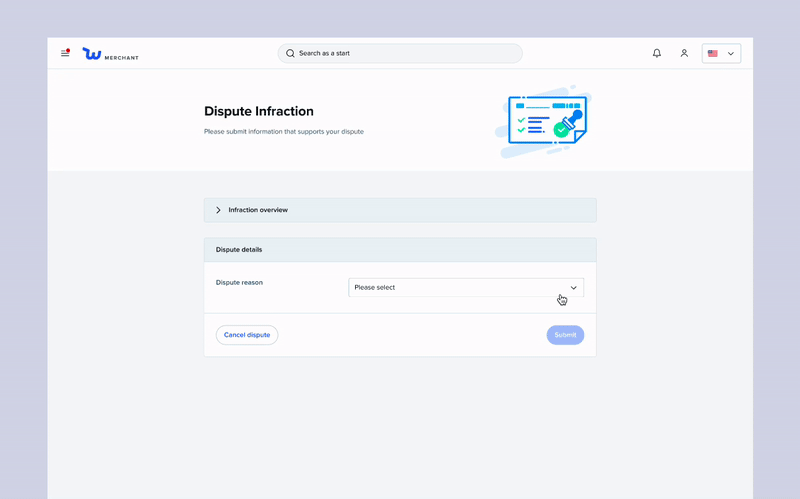
Allowing merchants to indicate dispute reason
Previously merchants were asked to "provide evidence" to dispute their given infraction. By asking merchants to select their dispute reason, Wish can offer more guidance to merchants further in the process.
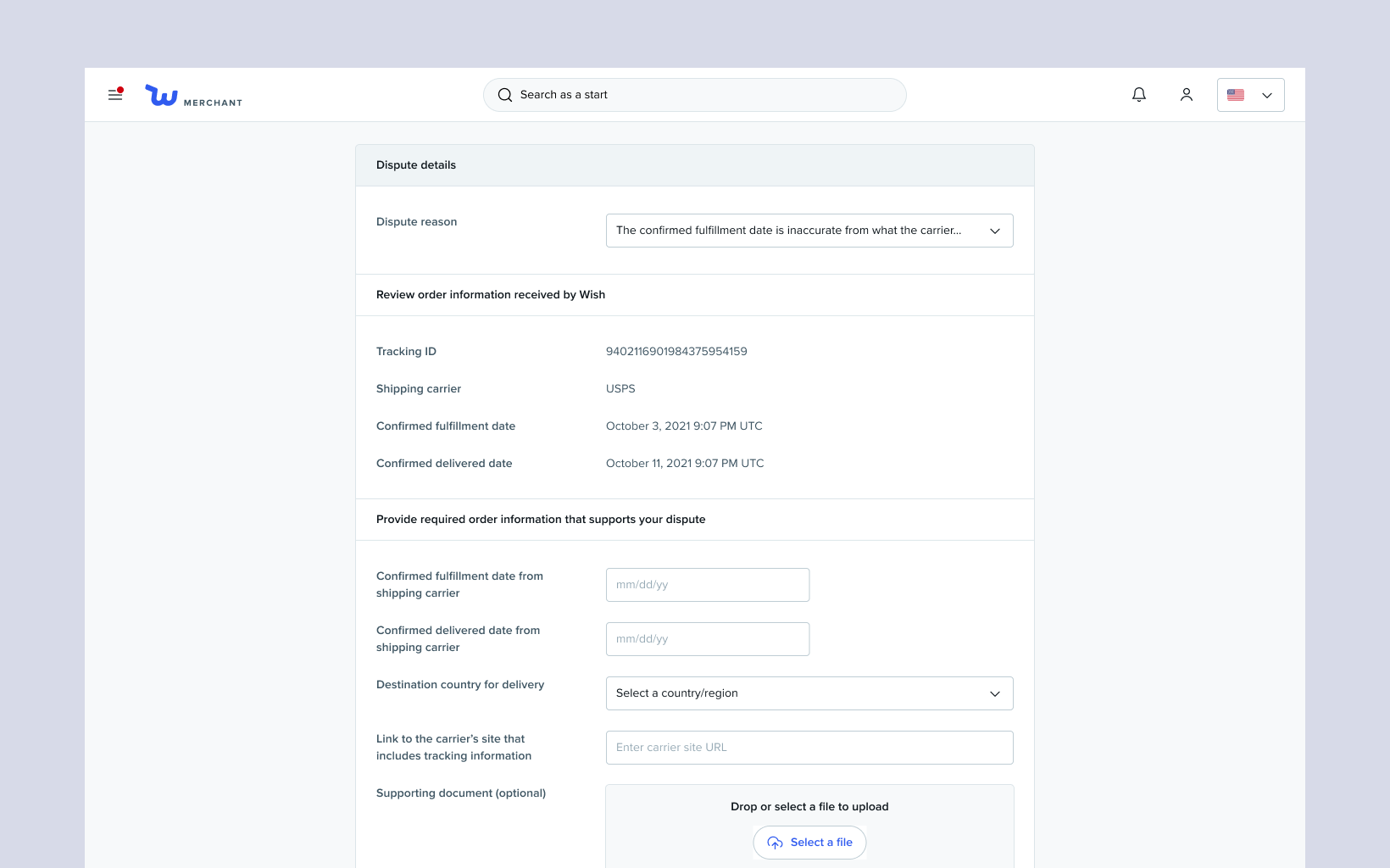
Customizing the form depending on dispute reason
Merchants are asked to review information received by Wish and to provide information and documents specifically requested by our merchant compliance team to review the dispute requests.
My team and I launched the changes in February 2022 alongside the release of the new seller standards program. As part of the project, we removed fines, which previously impacted roughly 20% of merchants.
The team and I are excited to have worked on this project and take part in the turn around strategy. With this new policy change and fine depreciation, we've implemented a corrective process, instead of an exploitive one, and are taking steps to make Wish a more attractive marketplace for merchants to sell in.